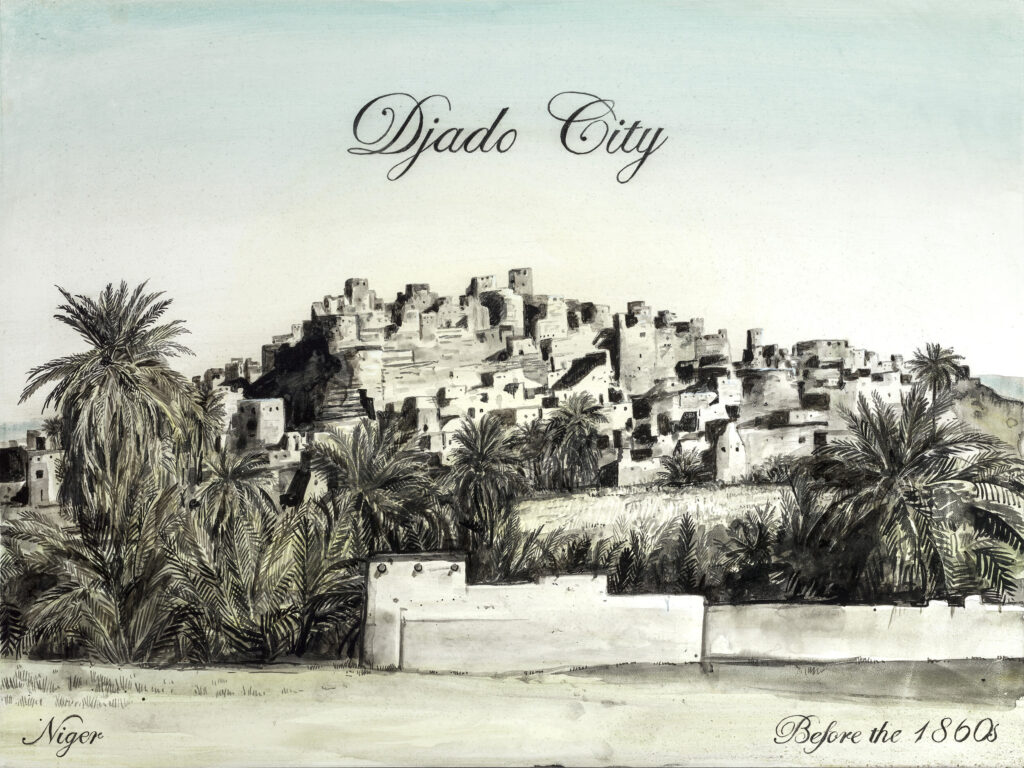Sahara Desert, Niger
Abandoned 1860s

The Disappointed Tourist: Djado City, Ellen Harvey, 2021. Oil and acrylic on Gessoboard, 18 x 24″ (46 x 61 cm). Photograph: Etienne Frossard.
The now ruined city Djado is located on the southern end of the Djado Pleateau in the Sahara in northern Niger. It is not clear who built the complex of fortified mud buildings (ksars). The city was a part Trans-Saharan trading network of the Kanuri people whose Kanem-Bornu Empire was founded before 1000 CE and at its greater extent covered what is now Cameroon, Chad, Nigeria, southern Lybia and Eastern Niger. It is not clear what caused the abandonment of the city after the 1860s: increased desertification, conflict or even a mosquito infestation have been proposed as possible causes. Since then it has been used by Toubou nomads for the cultivation of dates. The site also contains rock drawings and carvings from 12,000 to 6,000 BCE, depicting the fauna that roved the prehistoric Sahara. The Djado Plateau was added to the UNESCO Tenative List in 2006. The painting is extrapolated from an uncredited contemporary photograph of the ruins.
Djado is a forsaken city, a ghost town, in the Sahara desert that represents the beginnings of human civilization in one of the world’s hottest regions. Djado is also a symbol for the threat of climate change which looms over that area. Thorsten S.